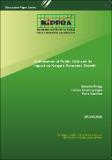| dc.description.abstract | Kenya’s Vision 2030 aims at achieving and maintaining a sustainable and
inclusive annual growth of 10 per cent. To achieve this, the government embarked
on expansionary fiscal policy, which involves investing in growth enabler
projects such as revamping existing infrastructure systems and establishing
new ones. However, most of these projects require large funding beyond Kenya’s
domestic revenue capacity and have led to a widening of budget deficit, which is
financed through public debt. Public debt refers to the outstanding liabilities of
government requiring future payment of principal and/or interest. The trend of
Kenya’s public debt stock has been rising sin1989/90. Public debt increased from
Ksh 84,051 million in June 1990 to Ksh 5,809,076 million in June 2019 to Ksh
6,649,573 million in May 2019. Nevertheless, even with rising public debt stock
size, Kenya’s public debt stock as a per cent of GDP of 62 per cent (June 2019)
remains below the nations debt limit of Ksh 9 trillion and Low Middle-Income
Countries (LMICs) IMF debt sustainability threshold of 70 per cent of GDP, and
thus deemed sustainable. Contrary to the Keynesian theory of economic growth
on the outcomes of expansionary fiscal policy and investment in growth enablers,
Kenya has been unable to attain the Medium-Term Plan (MTPs) targets of 10 per
cent annual growth required for the realization of Kenya’s Vision 2030. Kenya’s
real GDP grew from 4.9 per cent in 2017 to 6.3 per cent in 2018 and 5.6 per cent
in 2019. | en |

